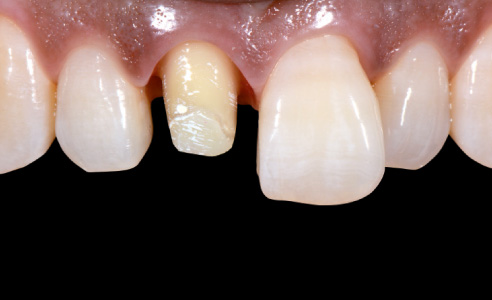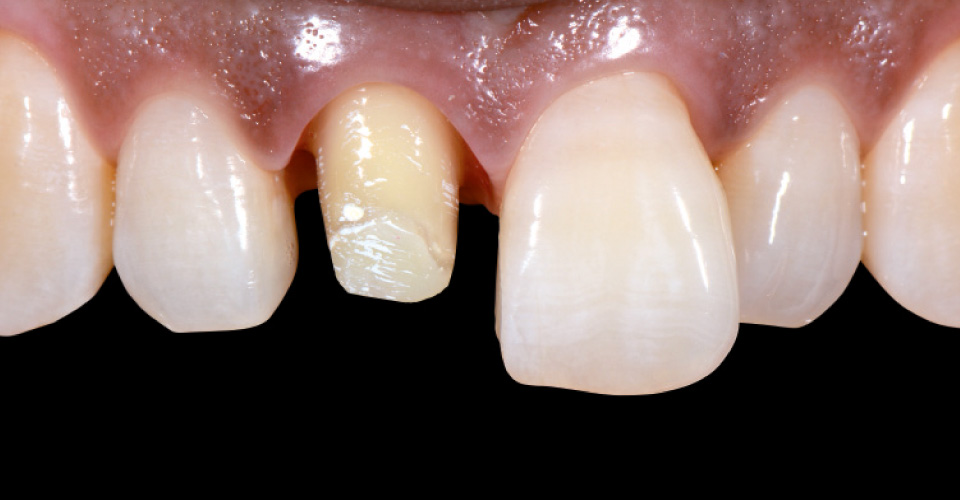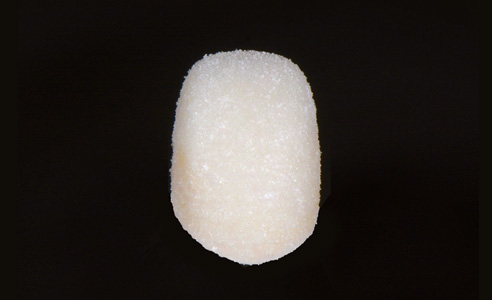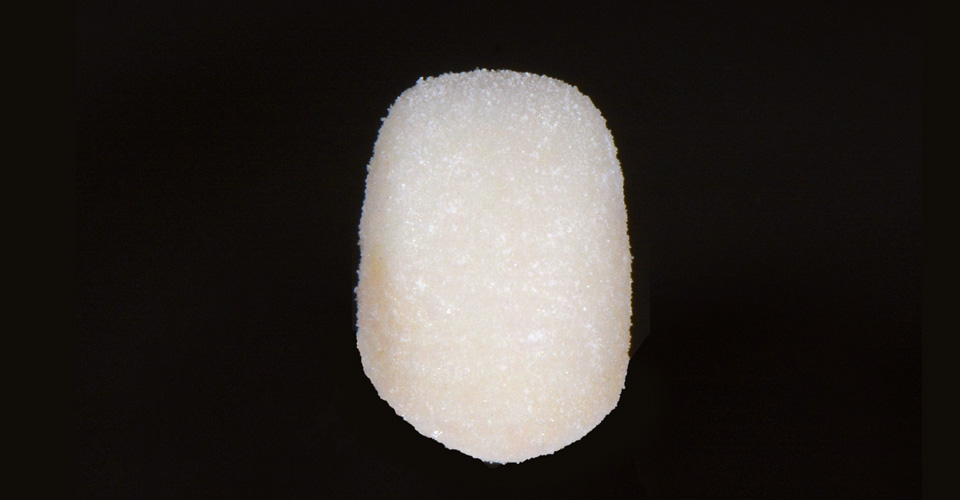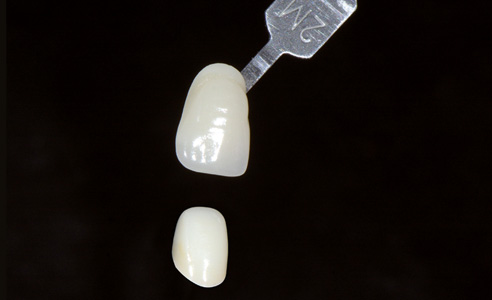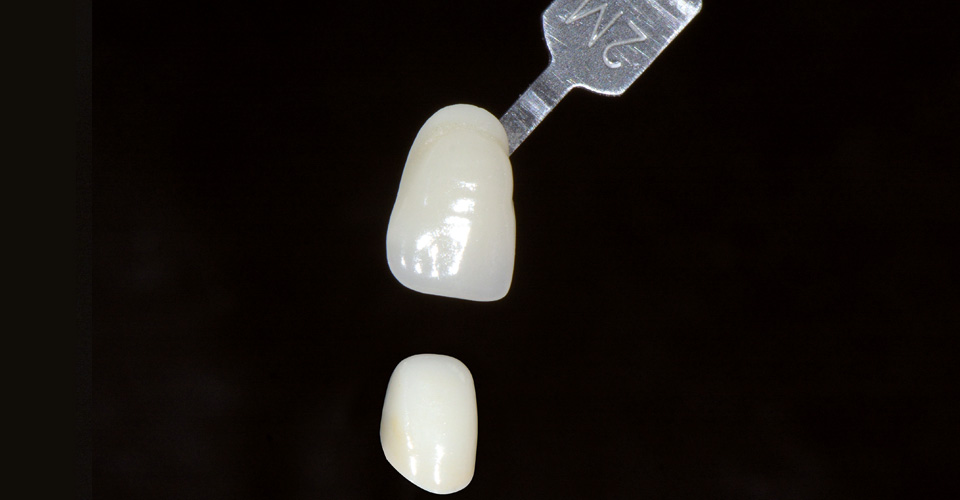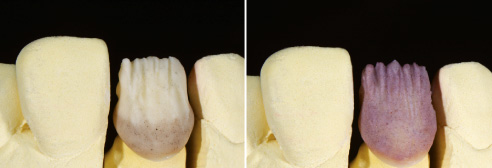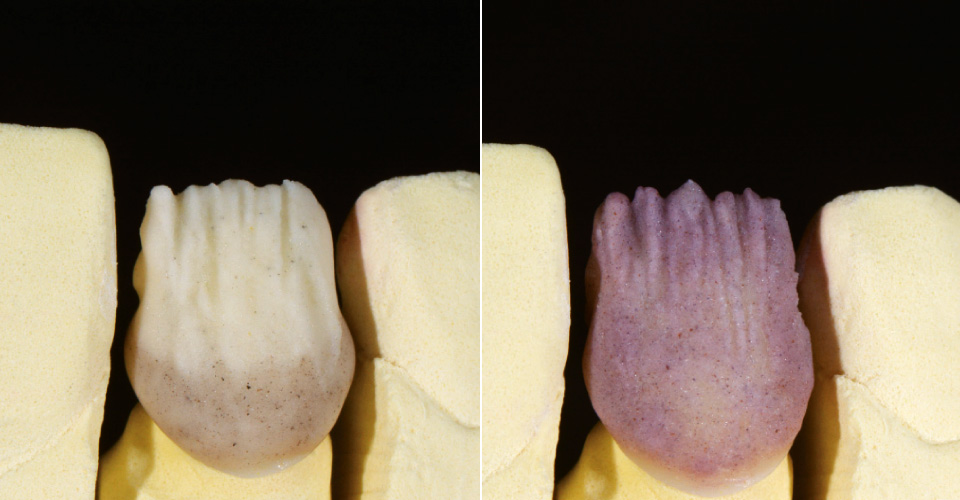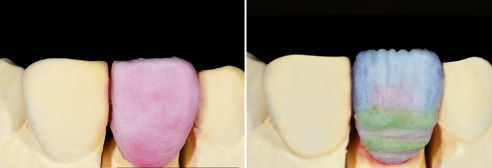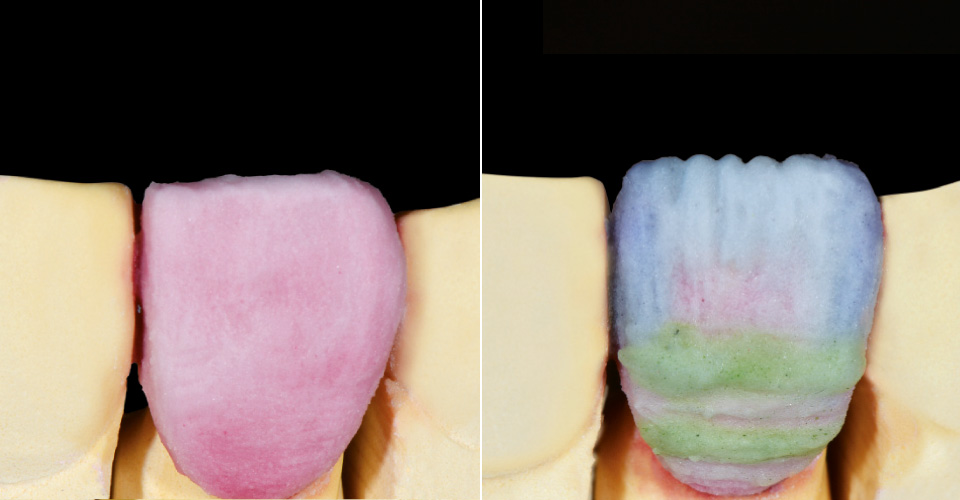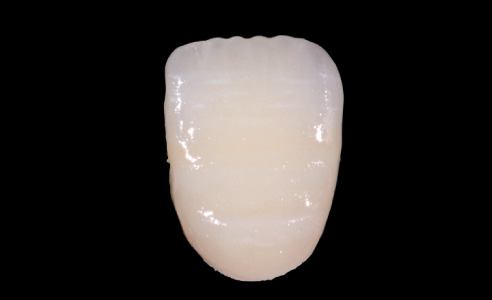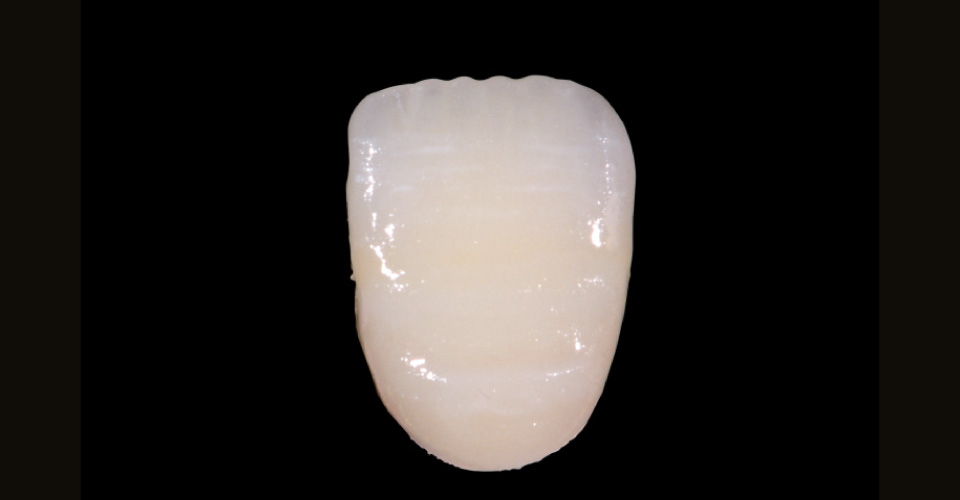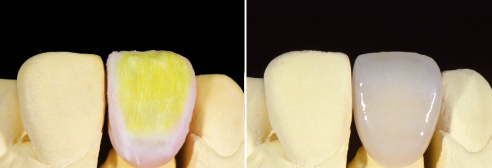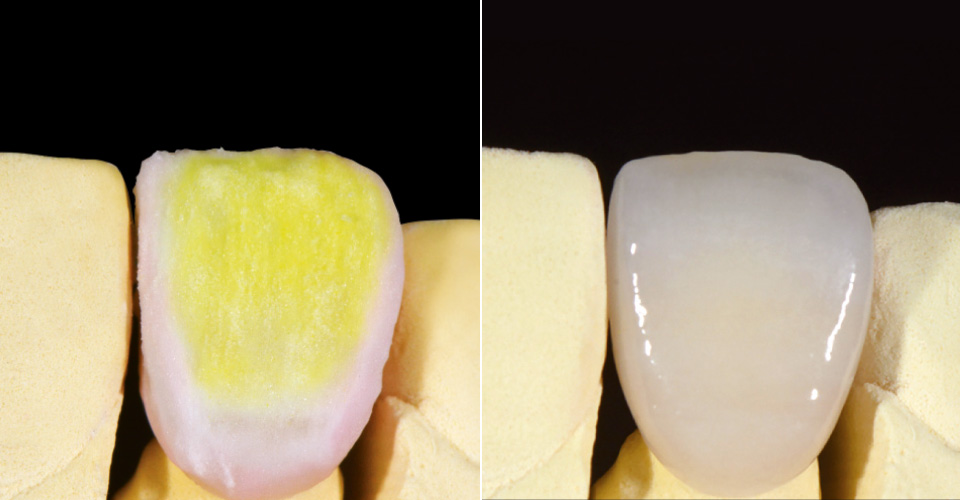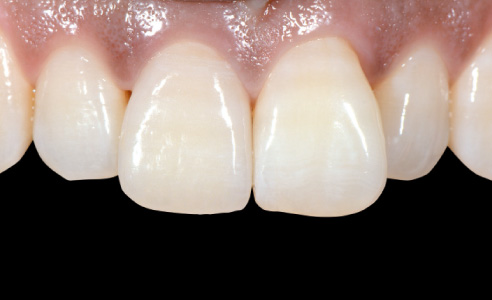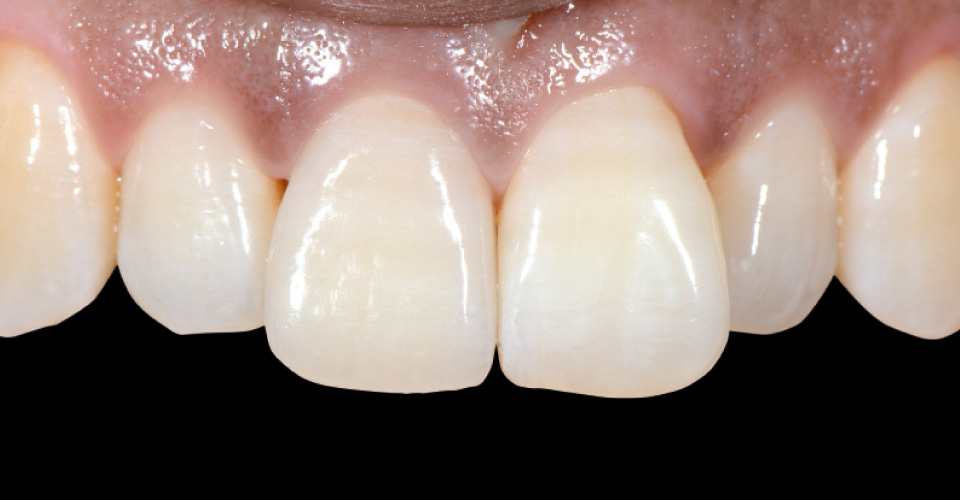Esthetic rehabilitation of an upper incisor with VITA YZ HT and VITA VM 9
In order for a single anterior crown to blend harmoniously into the oral appearance, the special features of the natural neighboring teeth must be reproduced. In the current case, tooth 11 was restored with a crown. The challenge was to replicate distinct individual characteristics of the natural dentition, such as calcifications. Chia Heng Chung, Dental Technician (Kaohsiung, Taiwan), explains how he was able to achieve a natural result using VITA VM 9 veneering ceramic (VITA Zahnfabrik, Bad Säckingen, Germany).
1. Intraoral situation
After the filling therapy of an advanced carious lesion on tooth 11, the soft pulpal tissue of a 37-year-old patient showed signs of irreversible infection. A root canal treatment was performed to prevent pain and bone resorption. The tooth had to be functionally stabilized after this invasive therapy. To enable a highly esthetic and natural restoration, a zirconia crown made of VITA YZ HT with a VITA VM 9 veneer was planned.
2. Shade determination and substructure fabrication
The tooth shade determination with the VITA Toothguide 3D-MASTER was a critical step for the successful veneering of the crown. 2M1 was determined as the base shade. A black and white photo helped to select the correct lightness and color saturation. The preparation for a full crown was carried out with a pronounced hollow shape in order to create space for the restoration. A master model was produced using an impression. A wax framework was modelled on 11 and then digitalized with a laboratory scanner. The constructed zirconia framework was milled and sintered from a VITA YZ HTwhite blank (VITA Zahnfabrik, Bad Säckingen, Germany).
3. Veneering
"Even after the first firing, the basic shade and lightness of the veneered framework should correspond to the determined tooth shade. In this case, I used a combination of VITA AKZENT Plus EFFECT STAINS and VITA VM 9 BASE DENTINE," Chia Heng Chung describes as the first, important step. In his opinion, the correct lightness is 60 percent of the success. "By controlling shade intensity and hue, we can already achieve 80 percent of the natural appearance. The remaining 20 percent depends on the individual abilities of the technician," explains Chia Heng Chung.
4. Treatment result
The finished restoration is integrated harmoniously into the esthetic zone. The full ceramic crown exhibited a natural play of color and light. Thanks to the precise determination of the basic tooth shade and the perfectly matched veneer ceramic VITA VM 9, a simple and structured approach was possible. The patient was very happy with the esthetic result. For Chia Heng Chung, CAD/CAM and craftsmanship complement each other: "The synergy between technology, art and beauty is the key factor for successful full ceramic crown and bridge restorations."
Report 08/16



